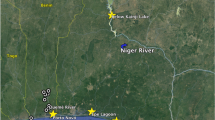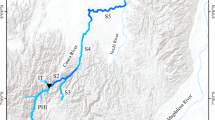Abstract:
The gag grouper Mycteroperca microlepis is an important component of commercial and recreational fisheries along the South Atlantic coast of the United States and in the Gulf of Mexico. Over the past two decades, this species has experienced significant declines in abundance and an increasing skew in sex ratios. Analysis of microsatellite DNA variation in this species shows mosaic patterns of population subdivision and significant departures from Hardy-Weinberg equilibrium in all sampling locations. Given the length of the pelagic stage (egg and larvae), the prevailing current patterns, and the migratory capabilities of the adults, it is unlikely that these observations are the result of restricted gene flow among genetically differentiated populations. The apparent structure of gag populations most likely reflects inbreeding in size-limited populations. Population declines, skewed sex ratios, and perhaps variance in female fecundity appear to have acted in concert to limited the number of individuals that contribute to a given year class. These data are reinforced by studies of other fish stocks that have experienced precipitous declines over the past two decades.
Similar content being viewed by others
Author information
Authors and Affiliations
Additional information
Received April 13, 1998; accepted September 30, 1998.
Rights and permissions
About this article
Cite this article
Chapman, R., Sedberry, G., Koenig, C. et al. Stock Identification of Gag, Mycteroperca microlepis, Along the Southeast Coast of the United States. Mar. Biotechnol. 1, 137–146 (1999). https://doi.org/10.1007/PL00011761
Issue Date:
DOI: https://doi.org/10.1007/PL00011761




